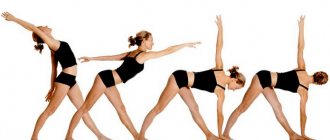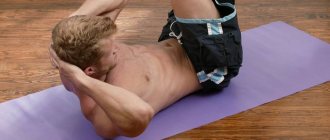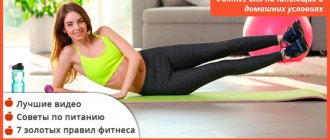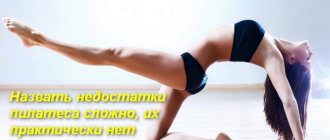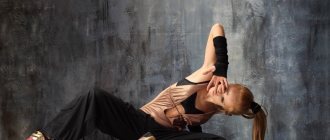How is yoga different from gymnastics?
Yoga in the full meaning of the word presupposes a special way of life, following which you can achieve complete enlightenment and absolute harmony in everything.
A person who decides to seriously take up yoga must understand: now he will have to reconsider his life principles, say goodbye to bad habits (alcohol, smoking and yoga are incompatible things), and it will take a lot of time to master the practice, so you should be patient.
Yogic teaching requires a rethinking of life principles, the ability to control one’s emotions and feelings through meditation and concentration. Without this, simple yoga at home will turn into ordinary gymnastics with a set of specific exercises aimed at improving the functions of certain organs and forming an ideal figure.
Halasana
The asan belongs to the category of inverted poses, has a second name - Plow pose, and is effective for treating the spine. As the pose is mastered, a person is cured of osteochondrosis in each part of the back.
In addition, the process strengthens the nervous system, improves cerebral circulation and stimulates the functioning of the genital organs. Like all inverted poses, Halasana gives good rest to the cardiac system, and also helps strengthen memory and develop thinking.
What are the benefits of yoga
How to start doing yoga at home from scratch? Before answering this question, we need to consider what impact it has on human health.
Experts say that the benefits of yogic exercises can be felt after just two months of training, provided that they are carried out systematically.
Yoga at home allows you to heal from diseases:
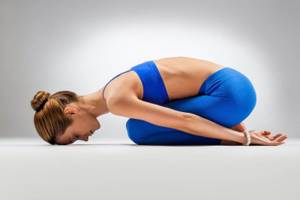
Baby pose
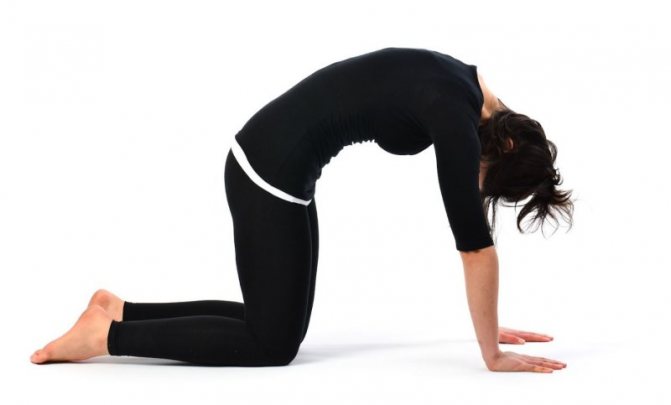
Cat pose
- spine, therefore recommended for stages 1, 2, 3 of scoliosis;
- heart and blood vessels;
- Gastrointestinal tract;
- in the field of gynecology;
- thyroid gland.
During classes, a kind of massage is carried out on the organs responsible for the vital functions of the entire body as a whole, so the process of its healing and strengthening of the immune system occurs.
Yoga makes the body flexible, makes the gait light and graceful, it activates the metabolism, therefore, losing weight is one of the results of the exercise.
Yogic asanas fill a person with positive energy, make him balanced and resistant to stress.
Ardha Matsyendrasana
Asana of intense spinal twisting or “half of the King of Pisces pose.” Exercise has a positive effect on the spine, charging it with additional energy, improving blood supply to the intervertebral discs, and also promotes enhanced digestion.

The pose helps lengthen the muscles of the hips, back, shoulders and neck, and also fully opens the chest.
Yoga classes: contraindications
Yoga classes at home or under the guidance of an instructor have a number of contraindications that must be taken into account in order to avoid undesirable consequences. However , even physical therapy has prohibitions, so this is not surprising. So, you can’t do yoga if:
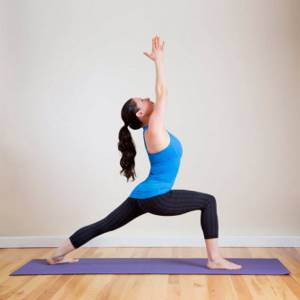
Warrior Pose
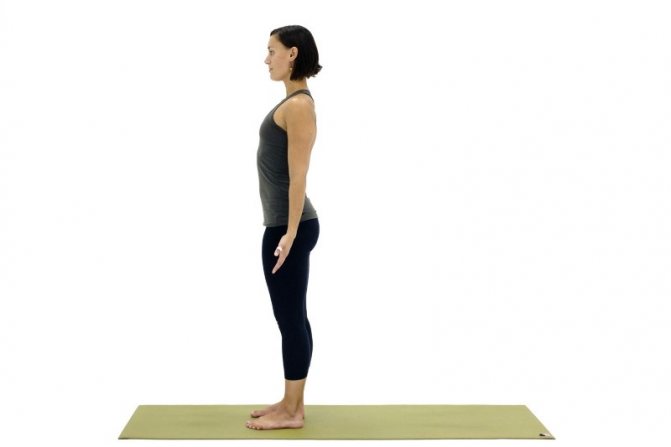
Mountain pose
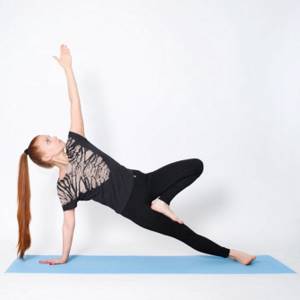
Triangle pose
- schizophrenia and other mental disorders;
- chronic diseases, especially during exacerbation;
- hypertension;
- serious spinal injuries;
- malignant neoplasms;
- arthritis and other joint diseases;
- colds, flu;
- hyperthermia.
A ban on classes is imposed in the case of recent surgery or pregnancy in the third trimester. Women during menstruation can exercise, but the exercises should exclude complex twisting and bending.
In any case, yoga lessons at home should begin only after consultation with a specialist. If during training your health worsens, dizziness begins or your heart rate increases, you should stop exercising and consult a doctor.
Also, home yoga classes should be postponed if you have recently consumed alcohol, are very tired, or are in a state of severe nervous tension.
Can beginners do yoga at home?
No one will dispute the fact that it is better to train under the guidance of an experienced instructor. Experts say that the initial stage is considered the most difficult in yoga, and an attempt to master the basics on your own can lead to results that do not live up to expectations. It is quite difficult for a beginner to understand how to properly start practicing yoga at home, perform the exercises and, most importantly, do them consistently so that the harmony is not disturbed.
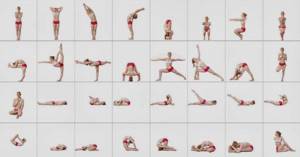
Yoga poses for beginners at home
However, we don’t always have time to go to group classes, and not everyone wants to, so home yoga is becoming increasingly popular. This also has its advantages, for example, you can perform the exercises at any time - in the morning or in the evening, independently regulate the frequency, pace and intensity of the workout, master the complexes at will and choose the one you like best.
In addition, you can create a cozy corner for yourself at home so that your activities bring true pleasure. Yes, and you can choose clothes at your discretion, the main thing is that it does not hinder your movements.
Beginners are often embarrassed by clumsy actions, especially when they see the training of more experienced yogis. By practicing at home, a person gains the opportunity to improve each asana, without focusing on others, concentrating solely on his feelings and observing the reaction of his body to a certain load.
Luckily, today yoga classes for beginners at home are available online so you can practice online.
Every yoga class at home for beginners will require patience and discipline. Very often, inexperienced yogis, not seeing results, conclude that training is useless and stop doing gymnastics, so high motivation is very important.
Parivrtta Trikonasana
It is also called the Inverted Triangle pose, which, by the way, with an experienced instructor, is even performed by people with cerebral palsy syndrome.
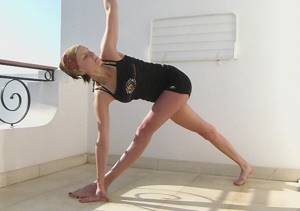
Parivritta Trikonasana perfectly strengthens all abdominal organs and also relieves back pain by improving its blood circulation. Maintaining balance in this position is much easier if both feet are firmly pressed to the floor, but it is very important to keep the spine as straight as possible.
Basic rules for beginners
“I want to do yoga at home, where to start?” - this is the question that beginners ask themselves when they are serious about improving their body’s health. First of all, you need to decide on the time of classes. Experts believe that the best time to practice is in the morning, as yoga fills the body with the energy that is so necessary for the working day. However, the average duration of classes is 2 hours, so many people transfer yoga classes at home to the evening, which is also allowed. The body is more flexible at this time, so the exercises are easier to perform; a relaxing complex for beginners, performed just before bedtime, promotes sound sleep and proper rest.
Even if the day has not been easy, you should try to give yourself at least 20 minutes to relieve stress. This will be more reasonable than then trying to catch up and study for four hours instead of two.
So, you have made a choice in favor of gymnastics such as yoga, where to start at home? It is necessary to decide on the location of the training. This should be a corner where no one will disturb you or interrupt your work, thereby disturbing the harmony of soul and body. This can be a separate room, a terrace, and in the warm season you can exercise in the fresh air; experts assure that training in nature is more effective. Wherever a yoga class for beginners is held, the place you choose should evoke only positive emotions.
Here are the simplest tips that experienced yogis give to beginners:
- Take a shower before training, not after, as the main healing property of yoga practice is the change in blood circulation.
- Before class (15 minutes before), drink a glass of ginger drink or warm milk with honey. This way the body will be more receptive to yoga.
- Don't eat anything before class. Hunger will facilitate the weight loss process, and you will be free from discomfort while doing exercises.
- The presence of drafts in the room is unacceptable: the muscles will lose elasticity and are less susceptible to warming up, and this is fraught with injury.
- Noise is also not an ally of yoga, so if you are distracted by extraneous sounds, use headphones or earplugs. Light irritation can be eliminated by using an eye patch.
- Before starting your workout, look again at the yoga complex for beginners at home , remember the sequence of asanas and start small.
Yoga exercises for beginners at home should be performed on a stable surface, preferably covered with a mat, to avoid injury, because you will be training barefoot.
Choose loose clothing made from natural textures. Synthetics should be avoided, as they do not allow air to pass through and do not remove moisture from the body, and this is not hygienic.
Which yoga direction should a beginner choose?
How to start doing yoga at home on your own and which direction to choose? Experts recommend that beginners first master hatha yoga, since almost all types of yogic practice originate from it.
Hatha yoga for beginners at home involves certain asanas, pranayama (breathing), meditation and the ability to relax - these are the main elements. The goal of hatha yoga, performed at home, is to achieve harmony and balance between soul and body. This direction is fully consistent with the physical capabilities of beginners, since the main emphasis is on developing flexibility, strengthening muscles and joints, those components that are necessary at the initial stage.
Stretching asanas, simple poses and their sequential change provide an excellent healing effect. Breathing practice and meditation are included in every exercise.
If your goal is to achieve inner peace, cleanse your inner consciousness through relaxation and meditation, then you should pay attention to kundalini yoga, which, moreover, allows you to get rid of problems in the nervous and endocrine systems.
How can people who lead an inactive lifestyle start doing yoga at home on their own? The ideal option is Iyengar yoga, which is also suitable for those whose physical capabilities are limited.
But Ashtanga Vinyasa yoga is clearly not for beginners; only experienced yogis who are already adapted to intense gymnastics can practice it.
Whatever direction you choose, the key to success is patience, endurance and self-discipline.
Ushtrasana
Ushtrasana, or as it is also called, Camel pose, is one of those yoga exercises that maximally tones the entire body, strengthening the arms, shoulders, back, hips, abdominals and chest.
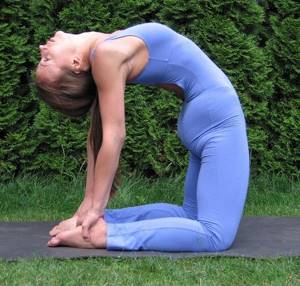
At the same time, posture improves and the flexibility of the spine increases; the Camel pose is very useful for curvature of the spine, as well as for disorders of the thyroid and genitourinary systems. When performing the exercise, it is important not to throw your head back or lean on your hands.



